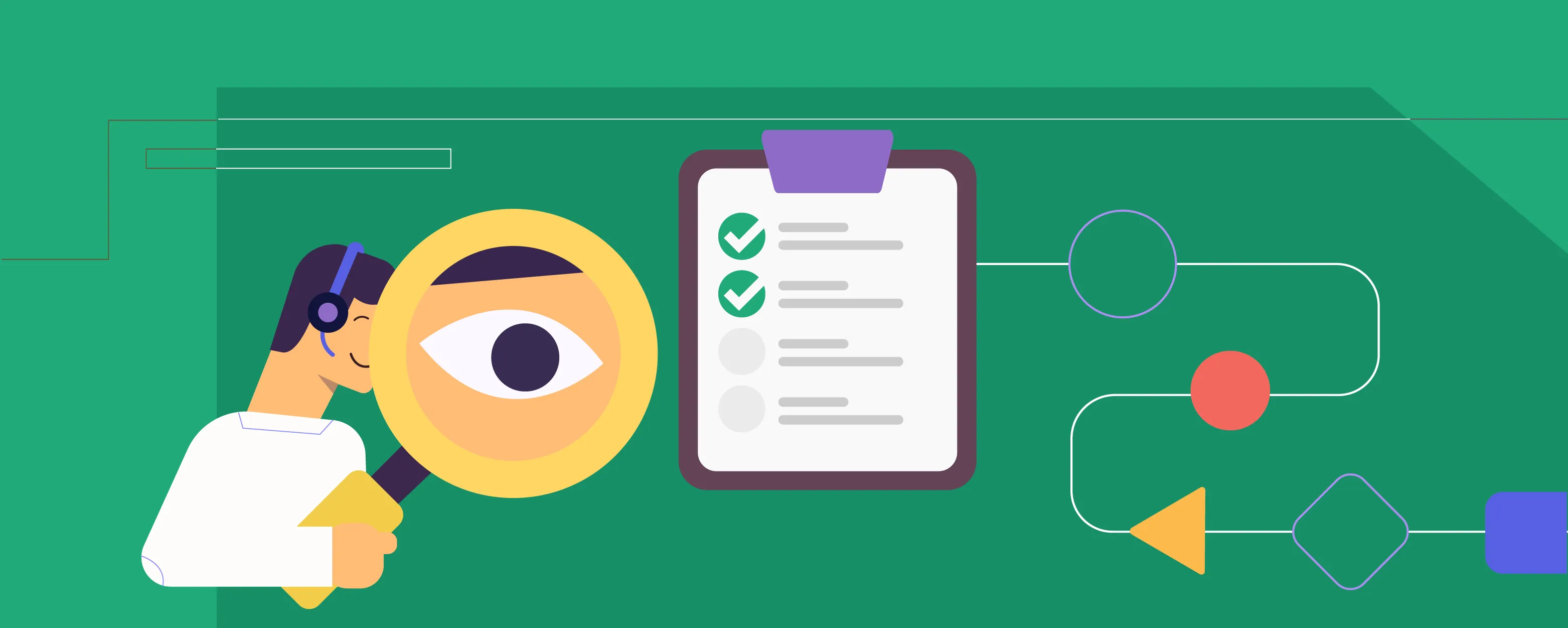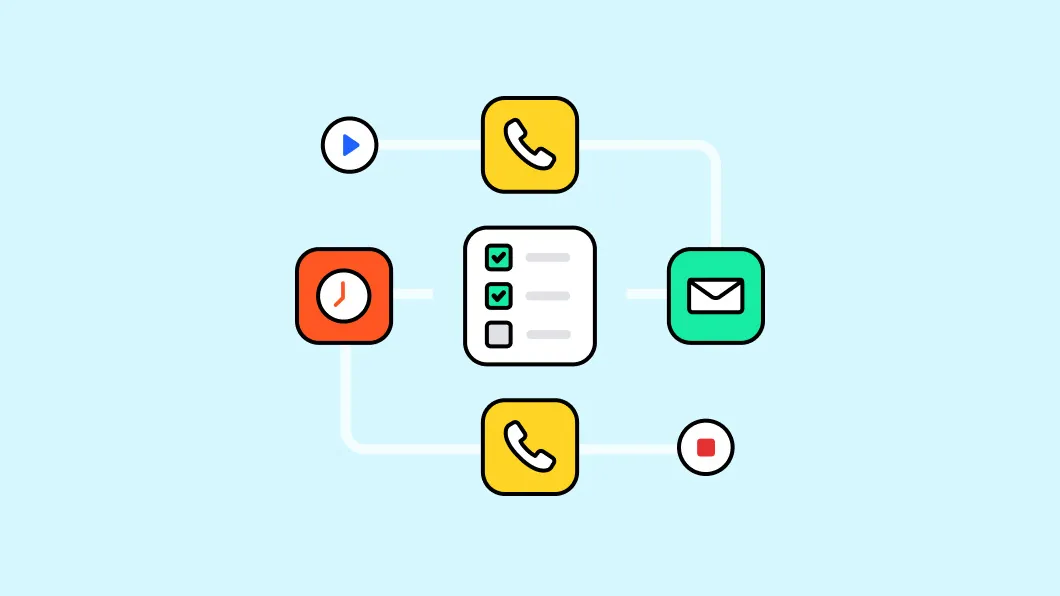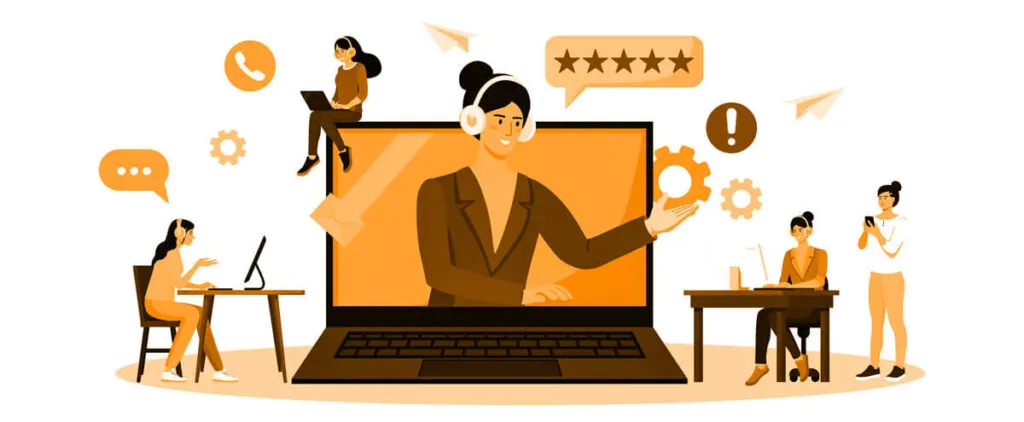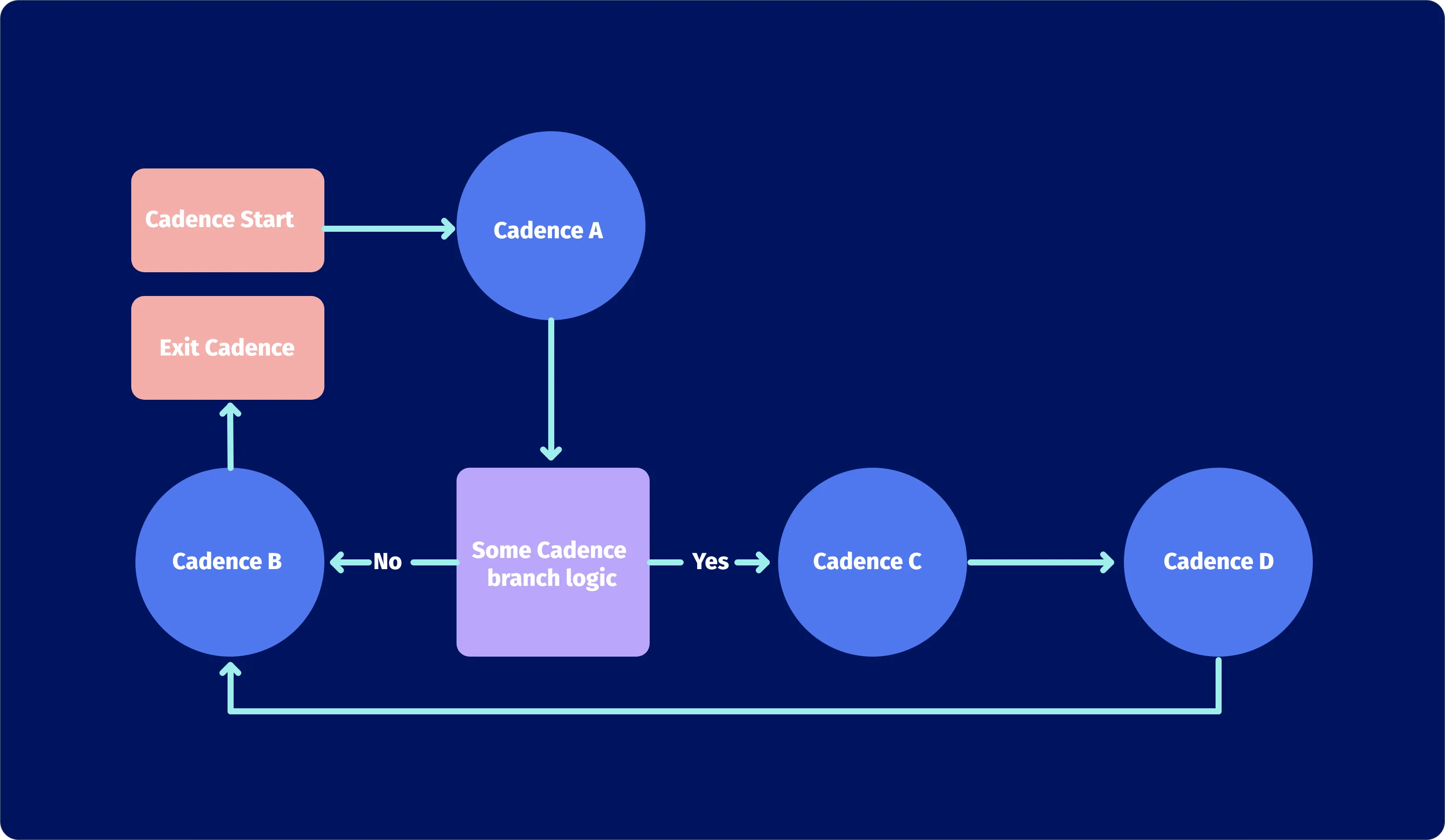Introduction to Sales Cadence

What is Sales Cadence
Sales cadence is a structured approach to scheduling and executing a series of interactions with potential customers, aimed at optimizing communication and enhancing the sales process. This sequence of actions—such as phone calls, emails, and meetings—helps sales teams effectively reach out to leads, follow up, and close deals.
There are two primary types of sales cadence: inbound and outbound.
Inbound Sales Cadence targets leads who have initiated contact. This approach involves quick, personalized responses tailored to the interests shown by the prospect, utilizing timely follow-up communications to nurture the relationship.
Outbound Sales Cadence focuses on potential customers who haven't shown direct interest. This method includes cold calls, emails, and social media outreach to introduce the brand and spark interest, typically employing a more persistent and aggressive strategy.
By implementing a well-defined sales cadence, organizations can ensure consistent contact, manage sales outreach efficiently, and improve conversion rates, ultimately leading to successful sales cadences.
- Companies that implement a structured sales cadence see a 40% increase in their contact rates. Regular follow-ups as part of a defined cadence lead to a 10% rise in the lead conversion rate.
- Sales teams that follow a predefined sales call cadence experience up to a 37% increase in successful contact rates. Regular and timed call sequences can boost the chances of making a successful sale by 25%.
- On average, it takes 8 touchpoints to get an initial meeting with a new prospect, but companies with a well-defined sales cadence may reach potential customers in as few as 5 to 6 interactions.
- Studies show that 50% of sales happen after the 5th follow-up call. However, 44% of sales reps give up after just one follow-up.
Components of Sales Cadence
- Touchpoints: Various interactions with prospects, including phone calls, emails, social media engagements, and meetings, each serving a specific purpose in the sales process.
- Timing: The schedule of interactions, optimized to engage without overwhelming, usually with strategically spaced follow-ups.
- Content: Tailored communication at each stage, from educational material early on to more direct sales pitches as the relationship progresses.
- Channels: Use of multiple communication channels based on the prospect's preferences and the sales stage, ensuring optimal reach and engagement.
Why Do You Need a Sales Cadence For Your Company

Implementing a sales cadence in your company is crucial for optimizing your sales process and improving conversion rates. A structured cadence ensures that all interactions with potential clients are timely, consistent, and effective.
Here's why a sales cadence is essential:
1. Improved Contact Rates
A systematic sales cadence can increase contact rates by up to 40%. It ensures that your sales team reaches out to prospects at the most opportune times, greatly improving the likelihood of engagement.
2. Efficiency and Productivity
Reduces Guesswork: Sales reps know exactly when and how to contact each lead, which maximizes their daily productivity.
Automates Routine Tasks: With tools like sales cadence software, routine follow-ups are automated, allowing reps to focus on more complex tasks.
3. Enhanced Customer Journey
Nurtures Leads: Regular and strategic touchpoints keep prospects engaged, gently nudging them down the sales funnel.
Tailors Communication: Each stage of the cadence can be customized to match the prospect's stage in the buyer’s journey, ensuring messages are always relevant.
4. Better Conversion Rates
Statistics show that following a structured cadence can improve conversion rates. For instance, consistent follow-ups as part of a cadence can lead to a 10% increase in lead conversion.
Moreover, 50% of sales occur after the fifth follow-up, yet 44% of sales reps give up after just one.
5. Measurement and Optimization
Tracks Performance: You can measure how effective different strategies and touchpoints are, allowing for continual optimization of the sales process.
Refines Strategies: Based on analytics, sales strategies can be adjusted to improve overall sales performance.
Sales Cadence vs Sales Script
How to Create an Effective Sales Cadence

Building a sales cadence is crucial for enhancing your sales process and improving engagement rates with potential customers. Here’s a guide to setting up an effective sales cadence:
1. Define the Objectives of Your Sales Cadence
Start by clearly defining what you want to achieve with your sales cadence. This could range from increasing lead conversions to enhancing customer engagement or speeding up the sales cycle.
- Concrete Goals: Set measurable goals like achieving a 20% increase in lead conversion rates or reducing the sales cycle duration by 15%.
- Timeline: Establish a specific timeframe for each goal to keep your sales team on track and motivated.
2. Identify and Understand Your Target Audience
Knowing your target audience is critical in tailing your sales cadence to the needs and behaviors of your potential customers.
- Demographic and Psychographic Analysis: Collect data on the age, location, industry, job role, and pain points of your prospects.
- Previous Interactions: Analyze past interactions to understand the types of content and communication channels that have been most effective.
3. Segment Leads According to Buyer Personas
Segmenting your leads allows you to personalize your sales cadence for different groups, increasing the relevance and effectiveness of your communications.
- Persona-Based Segmentation: Create distinct personas based on common characteristics and behaviors observed in your target audience.
- Tailored Messaging: Develop customized messaging for each persona, addressing specific needs and pain points.
- Feedback Loop: Regularly collect feedback from each segment to refine your approach and improve the sales cadence over time.
4. Selecting the Right Communication Channels for Different Segments
Choosing the appropriate communication channels is essential to enhance the effectiveness of your sales cadence. It's crucial to match these channels with the preferences and behaviors of different customer segments.
- Email: Ideal for delivering detailed content and can have open rates as high as 20-30% when personalized.
- Phone Calls: Essential for immediate feedback and clarification, with a success rate significantly higher in B2B sales when combined with email.
- Social Media: Platforms like LinkedIn are effective for B2B outreach, showing engagement rates that can surpass traditional email depending on the industry.
5. Crafting a Dedicated Sales Cadence for Each Segment
Developing a tailored sales cadence for each customer segment allows for a more personalized approach, increasing the likelihood of conversion.
- Initial Contact: Should occur within the first 24 hours after a lead is identified, as response rates drop by over 10x after the first hour.
- Follow-Up: Consistency is key, with studies showing that at least six follow-ups can lead to a 90% increase in reply rates.
- Content Variation: Utilize different content types in your cadence, such as case studies or testimonials, which can boost credibility and engage different types of leads.
6. Automating the Sales Cadence Process
Automation streamlines the sales process, reduces human error, and ensures that no lead is forgotten.
- CRM Integration: Automate task assignments and follow-ups based on customer interactions, which can increase sales productivity by up to 14.5%.
- Email Sequences: Use automated email sequences tailored to the sales funnel stages, which can increase engagement by delivering the right message at the right time.
- Analytics and Monitoring: Automated tools provide real-time feedback on the effectiveness of different cadence components, enabling continuous optimization based on performance metrics.
7. Enhancing Engagement Through Value-Added Outreach
Every interaction in your sales cadence should offer distinct value to the prospect. This approach not only keeps the conversation going but also builds credibility and trust, critical components for converting leads into customers.
- Educational Content: Share insights, industry reports, or whitepapers that address common challenges or questions in your prospect's industry. This not only positions your brand as a thought leader but can increase engagement rates by up to 40%.
- Personalized Solutions: Tailor your messages to address specific pain points or opportunities unique to each prospect. Personalization can lead to a 20% increase in sales opportunities.
- Exclusive Offers: Include special promotions or access to exclusive events as part of your outreach efforts. Such incentives can increase the likelihood of a response and deepen interest in your offerings.
Sales Cadence Examples

A well-structured sales cadence is pivotal for ensuring consistent and effective interactions with prospects across the sales cycle. Here are examples of sales cadences tailored for different scenarios, incorporating various communication channels and strategies:
1. B2B Sales Cadence for Technology Solutions
- Day 1: Send an introductory email outlining key technology benefits and a brief customer testimonial.
- Day 3: Follow-up with a LinkedIn connection request and a personalized message reiterating the offer.
- Day 5: Make a phone call to discuss the prospect's current technology challenges and how your solution can help.
- Day 7: Send a case study demonstrating the effectiveness of your solution in a similar industry.
- Day 10: Email a link to a webinar on upcoming technology trends relevant to the prospect’s business.
- Day 14: Schedule a final call to answer any questions and discuss next steps.
2. Outbound Sales Cadence for Retail Products
- Day 1: Send an email with product details, pricing, and a special discount offer for first-time customers.
- Day 2: Follow-up with a phone call to discuss the product features and answer any immediate questions.
- Day 4: Send an SMS reminding them of the discount offer’s expiration date.
- Day 6: Reach out via social media to share customer success stories and additional product insights.
- Day 8: Email a comparison sheet showing your product advantages over competitors.
- Day 12: Make a final phone call to address any last-minute hesitations and close the sale.
3. Email-Heavy Cadence for Software as a Service (SaaS)
- Day 1: Introduction email highlighting key software features and a free trial offer.
- Day 3: Email educational content like a blog post or white paper relevant to the industry.
- Day 6: Send an invitation for a free demo with a link to schedule a session.
- Day 9: Follow up with a reminder email for the demo and include a customer testimonial.
- Day 12: Conduct the demo, followed by an immediate email summarizing the session and next steps.
- Day 15: Send a final follow-up email to recap the trial’s benefits and discuss subscription plans.
4. Sales Cadence for Financial Services
This cadence is designed for financial advisors reaching out to potential clients interested in investment or retirement planning services.
- Day 1: Email an introduction that highlights your expertise and services, including a free financial health checklist.
- Day 4: Follow up with a personalized phone call to discuss the prospect's current financial goals and introduce key service benefits.
- Day 7: Send a detailed newsletter featuring market analysis and case studies that demonstrate how your advice has benefited similar clients.
- Day 10: Invite them to a webinar on effective investment strategies or retirement planning via email.
- Day 13: Follow up post-webinar with an email providing a link to the recording and offering a free one-on-one consultation to discuss their specific needs.
- Day 16: Make a final call to address any lingering questions and to encourage signing up for your services.
5. Hybrid Sales Cadence for Real Estate Agents
This cadence targets potential home buyers or sellers, blending digital and direct interactions to maximize engagement and trust.
- Day 1: Send an introductory email featuring current listings or recent sales, along with a brief video introducing yourself and your unique approach to real estate.
- Day 3: Follow-up with a direct mail piece, such as a postcard showcasing available properties or highlighting community events.
- Day 6: Make a phone call to schedule a face-to-face meeting or a virtual tour of selected properties.
- Day 9: Email a customized presentation or e-brochure that addresses the client's specific needs and preferences, emphasizing your expertise and success in the area.
- Day 12: Arrange an in-person meeting or house showing, providing a tailored experience that demonstrates your commitment to finding the perfect match for their needs.
- Day 15: Send a follow-up email thanking them for the meeting, attaching additional resources, or answering any further questions they may have.
Sales Cadence Best Practices

Implementing a sales cadence effectively is crucial for maximizing the efficiency of your sales team and increasing your conversion rates. Here are some best practices to consider when designing and implementing a sales cadence:
1. Optimize Touchpoints
Right Timing: The frequency of interactions should strike a balance between being persistent and respecting the prospect’s time. The best timings can often be derived from past interaction data showing when prospects are most responsive.
Diverse Communication Channels: Utilize a mix of touchpoints, including emails, phone calls, social media interactions, and even in-person meetings if applicable. Using multiple channels can improve reach and effectiveness.
Personalization: Tailor your messages to reflect the recipient's specific needs and previous interactions with your company. Personalized messages have significantly higher engagement rates.
2. Content Relevance
Value-Driven Content: Each piece of content delivered should add value, answering common questions or solving problems specific to the audience. Educational content, such as whitepapers, webinars, and case studies, can be particularly effective.
Clear and Concise Messages: Sales messages should be clear, concise, and direct. Avoid jargon and overly complex explanations that might detract from the main message.
3. Tailor Messaging to Individual Prospects
Deep Personalization: Beyond using the prospect's name, personalize your messaging based on their business needs, industry trends, and past interactions with your brand. This level of detail shows that you understand their unique challenges and are prepared to offer solutions.
Dynamic Content: Use data-driven insights to adjust the content dynamically, ensuring that what you send is always relevant to where the prospect is in the buying cycle. For instance, early-stage prospects might receive more educational content, while those closer to a decision could get more detailed product comparisons or case studies.
4. Assess and Adapt Your Sales Cadence Timing
Monitor Engagement: Regularly review how prospects interact with each stage of your cadence. Low engagement at certain points may indicate a need for adjustment in timing or messaging.
Be Agile: Don’t hesitate to shorten or extend the duration of your cadence based on real-time feedback and performance analytics. This flexibility can be crucial in keeping your approach aligned with market conditions and prospect expectations.
5. Enhance Your Unique Selling Proposition
Sharpen Your Pitch: Continually refine your value proposition to keep it compelling and relevant. Ensure that it clearly differentiates your product or service from competitors in addressing specific pain points.
Feedback Integration: Incorporate feedback from prospects and customers to refine your value proposition, making it more targeted and effective. This ongoing refinement process ensures that your offering remains attractive as market demands evolve.
Tools and Technologies for Sales Cadence

Implementing a sales cadence efficiently and effectively requires the right set of tools and technologies.
These tools can automate repetitive tasks, provide valuable insights, and ensure consistent communication with prospects. Here's a comprehensive guide on the tools and technologies essential for optimizing your sales cadence:
CRM Software
Salesforce: One of the most widely used CRM platforms, Salesforce offers extensive customization options, automation features, and deep analytics to manage your sales pipeline and sales cadence at scale.
HubSpot Sales: HubSpot provides an easy-to-use CRM with built-in features for email tracking, scheduling, and task management, making it easier for a sales rep to follow up with prospects according to a predefined cadence.
Email Automation Tools
Mailchimp: Primarily known for email marketing, Mailchimp also offers automation capabilities that can be utilized for managing email cadences, especially useful for nurturing leads.
Outreach: This sales engagement platform allows you to create, refine, and execute your email cadences with precision. Outreach offers templates and sequencing tools that automate your emails based on the behavior and response of your leads, fostering a strong sales cadence.
Calling Solutions
RingCentral: A comprehensive VoIP service that facilitates calling, messaging, and video conferencing. RingCentral can be integrated with CRM systems to streamline the calling aspect of your sales cadence.
Aircall: Designed for sales teams, Aircall provides call automation, recording, and analytics features that can be synced with your CRM to maintain a log of all interactions within your sales cadence.
Social Media Engagement Tools
LinkedIn Sales Navigator: Specifically designed for B2B sales professionals, this tool enhances your sales cadence by helping you find, connect with, and engage prospects on LinkedIn, the top social network for professional networking.
Hootsuite: Useful for managing social media interactions as part of a broader sales cadence, Hootsuite allows you to schedule posts, track social media engagement, and respond timely to inquiries or comments.
Analytics and Performance Monitoring Tools
Tableau: Integrating Tableau with your CRM can provide advanced analytics on your sales cadence's effectiveness, offering visual insights into performance metrics and areas for improvement.
Google Analytics: Use GA to track website engagements as part of your digital sales strategies. Understanding how prospects interact with your site after being nurtured through your sales cadence can inform adjustments and optimizations.
Proposal and Document Management
PandaDoc: This tool allows you to create, send, and track personalized proposals and contracts quickly, keeping these essential documents integral to your sales cadence.
DocuSign: Essential for closing deals digitally, DocuSign helps streamline the final stages of your sales cadence with electronic signatures, reducing the time to close.
Sales Cadence Management Platforms
Yesware: Perfect for email tracking and meeting scheduling, Yesware integrates with email clients like Gmail and Outlook, making it easy to maintain consistency and timing in your email cadence.
SalesLoft: Provides a comprehensive platform to build and analyze sales cadences, complete with tools for email sequencing, dialing, and integrating with major CRMs.
Concluding Thought
Designing a sales call cadence that converts leads involves strategic planning and the integration of proven practices. Key components include tailored interactions that meet the unique needs of each prospect, consistent follow-ups to maintain engagement, and leveraging technology to automate and optimize processes.
Real-world examples provide valuable blueprints for different industries, helping tailor your approach to maximize conversion rates. By focusing on personalized communication, regular touchpoints, and using advanced tools, your sales team can more effectively engage prospects and drive conversions, turning potential leads into valuable customers.









